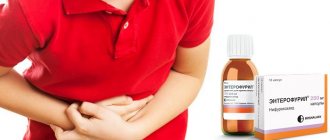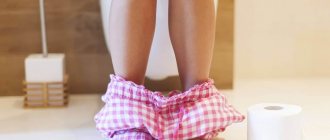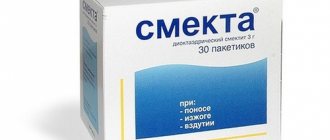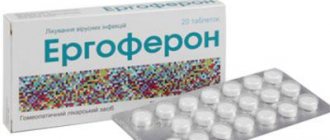Rotavirus infection is an infectious disease similar to food poisoning, which is caused by a specific RNA virus. The microorganism colonizes and multiplies only in the cells of the small intestinal mucosa. Therefore, the disease is characterized by signs of gastroenteritis. In the vast majority of cases, children aged 8 months to 2 years are affected. The older the child, the lower the chance of infection. The disease can progress in different ways, so parents are interested in the question of how long rotavirus infection lasts in children. In adults, the symptoms of the disease are vague, so it is rarely diagnosed.
What is Rotavirus
The infectious disease is an epidemic disease; it is often confused with influenza, but in terms of the nature of their manifestations, these diseases do not have similar symptoms. The peculiarity of the infection is that the virus is quite stable outside the human body.
The RNA virus lives in water for up to 2 months, on the surface of household furniture and furnishings - up to a month. It is not affected by an acidic environment; it is afraid of disinfectants when processed at temperatures above 80°C.
The infectious disease is caused by a small number of viruses that have entered the human body. Rotavirus infection in children and adults quickly becomes intestinal with its own symptoms, which determines the direction of treatment. Rotavirus infection is a type of acute intestinal infection. This is why this disease is called “stomach flu”.
Interesting! Symptoms of appendicitis in a child
Indications for use
The drug “Enterosgel” is prescribed to cleanse the body for the following ailments:
Enterosgel is prescribed for hepatitis, allergies, some kidney and liver diseases, and poisoning of various natures.
- viral hepatitis B and A;
- allergies and skin diseases;
- renal failure;
- gastritis with low acidity;
- nephrolithiasis;
- colitis;
- intestinal dysbiosis;
- drug and alcohol intoxication;
- cholestasis;
- pyelonephritis;
- burn intoxication;
- diarrhea;
- toxic hepatitis;
- entercolitis.
The drug can be prescribed for severe toxicosis in the first trimester of pregnancy.
In addition to infectious diseases, it is recommended to use Enterosgel
and in case of intoxication, in particular mushroom poisoning, alcohol and drug intoxication.
Timely treatment with Enterosgel
allows you to avoid serious consequences.
Fast and effective detoxification of the body with the use of Enterosgel
for all types of intoxication gives reason to consider it a first aid drug. The drug must be included in the list of medications for emergency medical treatment in first-aid posts, emergency departments and intensive care wards of hospitals.
This is interesting
Sick animals do not pose a danger to humans, but the “king of nature” may well cause illness in his pet.
How is rotavirus infection transmitted?
The main route of transmission is fecal-oral, through dirty hands, household items, contaminated water and food. The source of infection is a sick person, in whose feces billions of viral particles are released. The incubation period is 1-3 days.
The pathogen is relatively stable outside living organisms; in water it can remain viable for several weeks. It is highly contagious (infectious), spreads quickly in closed children's groups (nurseries, kindergartens, medical institutions for children). The peak incidence is from late autumn to mid-spring. Due to these properties, rotavirus infection is often called “intestinal flu”.
Disease prevention
In Russia, vaccination against rotavirus is not carried out. Therefore, all people are at risk, regardless of age. However, the chance of infection can be reduced by following a number of simple rules:
- it is necessary to refuse to take products of which the person doubts the quality;
- Do not drink water from unknown sources;
- After visiting the toilet and before eating, you must wash your hands;
- You can only eat vegetables and fruits that have been previously washed with running water.
If one of the family members is sick with rotavirus, it is necessary to provide him with separate dishes and a towel. A similar rule applies to linen and household items. All things that can be subjected to such a procedure must be soaked in disinfectant solutions, boiled or thoroughly washed with hot water.
The mechanism of occurrence of rotavirus gastroenteritis
Once in the gastrointestinal tract, rotaviruses penetrate the intestinal mucosa. The pathogen takes over control of protein synthesis, forcing the affected cells to reproduce new viral particles. In this case, the absorption and transport functions of the intestine are disrupted. Having exhausted all intracellular resources, the infection provokes the death of the infected cell, with the release of a huge number of newly created viral particles. Then the pathogen reproduction cycle is repeated. The progressive death of mucosal cells leads to intestinal inflammation. Digestive function is significantly affected, which is caused by enzyme deficiency.
Exposure to viral enterotoxin disrupts water absorption, resulting in the main symptom of the pathology – profuse diarrhea. Increasing intoxication provokes vomiting, which leads to an even greater disruption of the water-electrolyte balance in the body. Without correction of these disorders, dehydration quickly occurs, a decrease in the volume of circulating blood, and the preconditions for hypovolemic shock arise. In severe cases, death is possible.
The duration of the disease is from 1 to 2 weeks. In most cases, the immune system of a healthy person is able to cope with the disease on its own. Recovery from rotavirus infection takes several weeks. During this period, symptoms such as weakness, fatigue, indigestion, and transient lactose intolerance may persist. After an infection, partial immunity remains, which does not exclude re-infection, but facilitates the course of the disease.
Medicinal action
"Enterosgel" eliminates diarrhea, simultaneously removing toxic substances from the intestines, protecting its mucous membrane.
- eliminates diarrhea by increasing sphincter tone and reducing intestinal motility;
- cleanses the body of toxic substances accumulated in it;
- removes toxins;
- protects mucous membranes from irritating factors.
The components of the medicine are capable of “exporting” toxic substances, bacteria, heavy metals and their salts, poisons, allergens and alcohol from the body. In addition, the drug can absorb excessive amounts of bilirubin, cholesterol and lipids.
The drug restores damaged intestinal microflora and stimulates peristalsis, relieves inflammation and restores the mucous layer of the stomach and intestines, and therefore prevents the formation of erosions. The drug is not harmful and does not have a negative effect on the absorption of microelements and vitamins. The harmlessness of Enterosgel allows it to be used from the first month of a baby’s life.
In most cases, side effects from taking Enterosgel do not occur, but extremely rarely they can still manifest themselves in the form of constipation, nausea and bloating. If you take the drug during long-term intoxication in patients with existing renal and liver failure, then there is a risk of developing an aversion to the drug, which can go away after just a few doses.
There are practically no adverse reactions from taking the inert silicon mixture in the form of a gel. The drug helps to quickly remove the product of incomplete metabolism; the medicine is not absorbed and does not cause harm to the intestines. However, in some cases, dyspeptic disorder may occur. It is manifested by nausea, flatulence and pain in the epigastric region.
We recommend reading: MRI of the intestine or colonoscopy: which is better, which diagnostic to choose
In the first days of taking Enterosgel, it is recommended to give a cleansing enema. It helps to completely cleanse the intestines of harmful toxins and remove them. Sometimes your doctor may prescribe certain laxatives.
The shelf life of the drug is 3 years. It is stored at room temperature away from sunlight and children. Do not allow the gel mixture to freeze.
Correct lifestyle during rotavirus infection
Despite the fact that rotavirus gastroenteritis rarely lasts more than 1-2 weeks, a strict diet is necessary during the acute phase of the disease. The reason is that the virus causes total inflammation of the intestines, leading to dysfunction of the gastrointestinal tract. Food intake during this period should be limited; table No. 4 according to Pevzner is assigned.
Allowed: rice and buckwheat porridge, lean minced meat, fish, soups with low-fat broth, fruit purees from apples, berry infusions and jelly.
Prohibited: fatty, fried foods, confectionery, baked goods and pasta, delicacies, smoked foods, any dairy products, fresh fruits and vegetables, and other “heavy” foods.
This diet must be followed even after the symptoms disappear, until intestinal function is completely restored, which may take several weeks. Otherwise, diarrhea may recur due to enzyme deficiency. This is especially true for the consumption of dairy products.
Forecast
The prognosis is favorable if you seek medical help in a timely manner.
Polysorb or Enterosgel? Security Profile
Research shows that high sorption activity can be a “double-edged sword.” Despite all the obvious benefits of absorbing a particular drug, it is unacceptable to forget about the peculiarities of its selectivity. Enterosgel, in comparison with its well-known “brothers”, including highly dispersed silicas, is distinguished by its selectivity.
Polysorb has increased sorption activity towards proteins. In practical medicine, this enterosorbent is often used in the treatment of burn disease, since in these conditions a large number of breakdown products of a protein nature circulate in the bloodstream. However, when following a low-calorie diet when losing weight, in case of some intoxications, when increased protein consumption occurs, then it is recommended to use selective enterosorbents (for example, Enterosgel).
Research shows that high sorption activity can be a “double-edged sword.” Despite all the obvious benefits of absorbing a particular drug, it is unacceptable to forget about the peculiarities of its selectivity. Enterosgel, in comparison with its well-known “brothers”, including highly dispersed silicas, is distinguished by its selectivity.
Polysorb has increased sorption activity towards proteins. In practical medicine, this enterosorbent is often used in the treatment of burn disease, since in these conditions a large number of breakdown products of a protein nature circulate in the bloodstream. However, when following a low-calorie diet when losing weight, in case of some intoxications, when increased protein consumption occurs, then it is recommended to use selective enterosorbents (for example, Enterosgel).
The first signs of rotavirus infection in a child
The manifestation of the disease in children and adults is different; rotavirus intestinal infection has its own symptoms in each case, which determines the difference in treatment.
When affecting children, rotavirus is aggressive and quickly manifests itself as acute symptoms of malaise, fever, and diarrhea. An adult often does not consider himself sick; he suffers mild cold symptoms and minor diarrhea on his feet without leaving his workplace. In fact, they themselves are sick, and can transmit the virus to members of the team, bring the infection to the family, to their children.
- Do you know how to treat rotavirus intestinal infection in children? This is the first time I have heard about this disease Vote
Rotavirus intestinal infection is especially severe in children under 2 years of age, manifests itself in severe symptoms, and requires special treatment. This is due to the age of the children.
Children are characterized by a severe picture of clinical manifestations:
- temperature rise to a critical level, often above 38.5-39.7 °C;
- repeated vomiting;
- frequent debilitating diarrhea.
Interesting! The best pain reliever for menstruation
Symptoms increase as the disease progresses, and each child’s reaction to the virus is different. If the disease begins in an infant, he is immediately hospitalized in the infectious diseases department. In children under 3 years of age, the disease is especially difficult, so they are offered inpatient treatment, but treatment at home is excluded.
Symptoms and signs of rotavirus infection
- Nausea, vomiting for several days;
- Watery, loose stools for 3-7 days;
- Stomach ache;
- Fever, increased body temperature;
- ARVI symptoms;
- Weakness, dizziness.
Symptoms of dehydration in young children observed with severe rotavirus infection: irritability, tearfulness, crying without tears, decreased urination (“dry” diaper), dry mucous membranes, dry skin, drowsiness, sunken eyes, decreased skin elasticity, tachycardia.
Signs of rotavirus infection in an adult
The first signs of the disease are:
- damage to the gastrointestinal tract, the appearance of epigastric pain, nausea, vomiting, diarrhea;
- catarrhal signs of damage to the eyes and respiratory tract, which is usually characteristic of a cold;
- intoxication manifestations in general weakness, drowsiness, severe headache, pain in joints and muscles, loss of appetite;
- the appearance of the smell of acetone from a sick person.
The clinical picture occurs mainly without fever, with mild symptoms. This is typical for the disease of an adult.
In adults, treatment of rotavirus intestinal infection depends on the symptoms, and what to treat will be determined by a therapist called to the house. Based on the patient’s condition, the doctor will prescribe treatment at home or suggest hospitalization in the infectious diseases department.
First aid
The algorithm for parents' actions when rotavirus infection is detected has been worked out in pediatrics and in adult practice. When children show signs of rotavirus in an uncomplicated form, how to treat it at home should be clear to parents. First of all, it is important to prevent dehydration, especially in an infant.
Basic first aid actions at home:
- Give warm drinks often, but not in large quantities. Eliminate dairy products completely. Use regular filtered water, alternating it with saline solutions; you can give pharmaceutical solutions of Regidron, Oralit, Glucosolan to drink. They are diluted at the rate of 1 liter of water – 1 sachet of powder;
- If a child goes to the toilet every 3 hours, then the water intake is sufficient to prevent dehydration. When it is not possible to give a child something to drink, he does not swallow water even from a measuring syringe, he spits it out, or, worse, he vomits from the water, so urgently call an ambulance.
- Small children are placed on their side so that during attacks of vomiting, the masses do not enter the respiratory tract, which often happens in an infant, and he chokes on vomiting.
- Antipyretic medication should only be given at temperatures above 38.5°C.
- Avoid feeding. If children 4 years old develop an appetite, they can be given a little liquid porridge or pharmacy fruit puree.
- If the disease occurs in an infant, it is recommended to leave a diaper with feces until the doctor arrives; for children 5 years old, leave a filled potty. The doctor will more accurately determine the type of disease based on the contents of stool.
Parents often make mistakes and give their children antibiotics, antibacterial, and antidiarrheal drugs. In the case of rotavirus, they are powerless; taking them can aggravate the child’s condition and cause unforeseen complications. Before the doctor arrives, do not give your child folk remedies.
Treatment of rotavirus infection
RNA rotavirus disease is treated in other ways. Stopping diarrhea is dangerous because the virus remains in the small intestine, where it destroys beneficial cells. With this disease, diarrhea is the body’s natural defense; infiltrated viruses are eliminated faster with feces. Antiviral drugs available in pharmaceuticals, usually used for intestinal infections, are powerless against rotavirus. Homeopathic remedies - Anaferon, Oscillococinum - will not help either.
Infectious disease doctors know that RNA rotavirus cannot be destroyed by antibiotics; they kill non-pathogenic bacteria. Anti-bacterial and anti-diarrhea medications are also not applicable.
The following areas of treatment are distinguished:
- relieve the patient from dehydration; in difficult cases, the patient is prescribed drip intravenous administration of saline with vitamins, glucose with colloidal solutions;
- cleanse the body of toxins remaining after the life of rotaviruses;
- follow a diet, first with a complete abstinence from dairy products; When a person’s appetite is restored, he asks for what he would like to eat. But you must completely avoid fatty, salty, smoked foods;
- restore microflora in the intestines affected by viruses; For this, doctors prescribe probiotics and vitamins. Most often, such treatment is carried out at home; after the acute period of the illness has passed, the person is discharged home.
Interesting! What ointments can quickly cure a cold on the lips?
This treatment is carried out regardless of how long the person’s incubation period lasts. To avoid general intoxication, patients are prescribed sorbents after the end of the incubation period. Folk remedies are added to general treatment.
What is the difference
The drugs are based on silicon components, but do not contain the same active ingredient. They include elements that have different active surface areas. For Polysorb this figure is 2 times higher, which also determines a higher sorption capacity.
Characterized by a larger area of influence, Polysorb removes toxic substances from the body as quickly as possible, but also absorbs useful microelements and has high activity against proteins. Therefore, patients following a low-calorie diet due to certain intoxications or weight loss may experience “protein starvation” and hypovitaminosis.
Enterosgel has a more selective effect and absorbs only dangerous compounds, without affecting the microelements, proteins and vitamins necessary for the body, and also helps restore a healthy balance of intestinal microflora.
Unlike Polysorb, Enterosgel can be used for diseases of the intestines and stomach, since the paste has an enveloping ability and does not provoke irritation of the mucous membranes.
Enterosgel is available in the form of a ready-to-use paste, which is placed in a special tube.
Enterosgel is available in the form of a ready-to-use paste, which is placed in a special tube. The drug can be taken with you and used anywhere. Polysorb is produced in the form of a powder for diluting a suspension, which affects the ease of administration and reduces its functionality.
Treatment of a child
If rotavirus is detected in children 6 years old, they are treated in the infectious diseases department. Only a mild form of the disease allows treatment at home, with strict adherence to doctor’s prescriptions.
Therapy in the hospital department has the goal of:
- Restore water-salt balance. The child is given a lot of fluids and Regidron is used.
- Cleanse the body of toxins. For this purpose, sorbents are prescribed - Enterosgel, Smecta, activated carbon, these are means of gently cleansing the intestines from pathogenic components.
- Restore digestion. The doctor prescribes Festal, Solizim, Creon, Somilaza. They activate the synthesis of enzymes that improve the functions of the gastrointestinal tract.
- Eliminate diarrhea. The doctor prescribes Enterofuril, Enterol, which relieve diarrhea and at the same time remove toxins.
Abdominal pain is relieved with No-Shpa, Spazmalgon. Vomiting is stopped with droppers of vitamin and saline solutions. High temperatures are brought down with Paracetamol, Ibuklin, Ibuprofen, Nurofen.
In children under 7 years of age, Cefekon rectal suppositories are used against fever. The temperature is not reduced to 38°C, since in this state the synthesis of interferon is stimulated - a natural protector against the disease, which has a detrimental effect on viruses.
Doctors exclude the use of Aspirin against fever. It is easier to relieve fever using folk remedies.
The doctor prescribes medications for each individual child, based on his age, general condition, and signs of intoxication. Children recover from such an illness for a long time - from 2 weeks to 1.5 months. At this time, remnants of intoxication appear; the child may be drowsy, tired, and feel lightheaded.
Rotavirus intestinal infection in children over 10 years of age is similar in symptoms and treatment to the treatment of the disease in adults. During the recovery period, all those who have been ill are given folk remedies that strengthen the immune system.
Will Coca Cola help?
“Coca-Cola” is a sweet carbonated drink that both children and adults love, because it tastes good and cools well in the hot season. It is difficult to imagine that this drink could have any medicinal effect.
The original goal of Coca-Cola was to improve digestive function, so it was sold through the pharmacy chain. Today, Cola is used as an unconventional method for the treatment of intestinal infections, including rotavirus.
Why does it help?
The drink contains orthophosphoric acid, which can inhibit the growth and development of bacteria and fungi. It also restores intestinal motility and fights vomiting. A large amount of sugar is also a positive factor, because carbohydrate reserves are depleted during illness, and this weakens the body.
Application
The optimal temperature of the drink is room temperature. There should be no gas bubbles in it. There is no exact dosage provided, since Cola-Cola is not an official medicine. Children over 14 years of age are recommended to drink a glass, and those under 14 years of age - only after consulting a doctor, along with prescribed medications and once.
Rotavirus infection is an acute intestinal disease that affects the epithelial layer of the intestinal mucosa. Symptoms are intoxication, severe dehydration in combination with dyspeptic disorders.
All people are susceptible to disease. The disease often affects children in the first year of life. Infection occurs from a sick person or carrier. The mechanism of transmission of the disease is fecal-oral. The routes of transmission of the pathogen are household contact and food. Less commonly, airborne infection.
Entering the body through the mouth, viral particles settle on the epithelial cells of the large intestine and multiply. Epithelial cells are destroyed and replaced with young immature forms with functional insufficiency.
Dehydration develops against the background of diarrhea and vomiting. This is dangerous in infancy. The course of the pathological process is aggravated by symptoms of intoxication and inflammatory phenomena of the intestinal walls.
No specific antiviral drug has been developed that destroys rotavirus particles. Treatment of intestinal rotavirus infection consists of pathogenetic and symptomatic measures. Measures are being taken to reduce dehydration and eliminate intoxication. In mild cases, oral rehydration is prescribed - treatment by drinking solutions. Take them often, little by little.
The second point of treatment is assistance in removing viral particles and toxins from the body. In the treatment of enterovirus infection, drugs belonging to the group of intestinal sorbents are used. They collect toxins and viruses on the surface and remove them from the intestines.
The sorbents include:
- "Smecta".
- "Enterosgel".
- "Polysorb".
- Activated carbon.
- "Lactofiltrum".
The drug has a gel consistency – “Enterosgel”.
"Enterosgel" is an intestinal sorbent. The main active ingredient is methyl silicic acid.
The drug is a transparent or whitish wet gel with inclusions of lumps several millimeters in size.
There are two types of release form of the drug - paste and gel. The gel is diluted in water before use. The result is a suspension.
The paste does not need to be diluted - it is ready for use:
- The organic silicon base of the drug has adhesive properties and absorbs toxic substances and metabolic products.
- Having collected toxic substances, Enterosgel removes them from the intestines to the outside.
- The body is cleansed and the condition improves.
- When removed from the body, the drug does not affect the beneficial substances and microorganisms present in the intestines.
The drug is indispensable for the complex treatment and prevention of intestinal infections.
"Enterosgel" has a specific feature due to its chemical composition. Methylsilicic acid includes a molecule corresponding in size to molecules of microbial and viral toxins. This is the reason for the sorption capacity of the drug.
Pharmacological effects for rotavirus infection:
- Absorption of bacterial, viral toxins and metabolic products.
- Removal of absorbed particles from the intestines naturally.
- Cleansing of toxic products from the intestinal lumen and blood.
- Neutralization of the effects of allergens and radionuclides. The drug collects pathogenic microflora on the surface.
- Excess breakdown products of cholesterol and bilirubin are removed from the intestines.
- Protein and lipid metabolism in the body is normalized.
- Normal intestinal microflora is not affected.
- Digestive functions and the activity of the kidneys and liver are normalized.
- Thanks to the action of the drug, the formation of erosive and ulcerative defects on the mucous membrane of the stomach or intestines is prevented.
- The peristaltic activity of the intestine is stimulated.
- Activation of the body's immune defense.
The drug is not absorbed into the bloodstream. 12 hours after administration, it is excreted from the intestines.
The enterosorbing effect of the hydrogel during rotavirus infection is associated with the structure. The active substance is a matrix containing silicon molecules. The matrix is cellular, the cells are filled with water.
There are gaps in the matrix that correspond in size and structure to the size of the microorganism toxin molecule.
Enterosgel has a pronounced hydrophobic property and does not stick to the walls of the intestinal mucosa. This protects against injury and absorption of the drug into the blood in the intestines.
Entering the intestines during rotavirus infection, the drug captures toxic elements of exogenous and endogenous origin. These are particles of viral and microbial bodies, their breakdown products, and metabolic products of the body.
The substance is present in the intestines for 12 hours, after which it is excreted from the body unchanged. Presence in the stomach and intestines does not affect the absorption of nutrients and trace elements. The motility of the digestive tract is not impaired.
"Enterosgel" for intestinal infections is a ready-to-use sticky wet mass. The gel contains small lumps of different sizes and shapes.
It is recommended to take Enterosgel to prevent rotavirus before meals. They take the medicine at different times with other drugs. Before use, dilute the gel in clean water.
The daily dosage of the drug depends on the child’s body weight. The instructions for use contain a table for calculating the dosage of the drug.
Young children often refuse to take medicine due to nausea, poor health, and lack of appetite. It is allowed to dilute the drug in jelly from fresh berries. It is prepared from jam or syrup, pureed berries, and natural juice. Instead of jelly, use rice water or weak chicken broth.
For children transferred to the common table, the medicine is added to semolina porridge or fruit and vegetable purees. Portions of food should be small, but given often.
Enterosgel is taken against rotavirus for at least three weeks. As prescribed by the attending physician, the duration of the appointment is increased.
After the diarrhea stops, the drug is taken for another week. If the course of the disease in adults is severe, it is permissible to double the daily dosage.
The medicine is combined with other medicinal substances if taken at different times.
Treatment or prevention of intestinal infection with Enterosgel is contraindicated:
- Individual intolerance to the components of the drug.
- Severe intestinal atony.
- Acute intestinal obstruction.
- Acute poisoning with substances of a caustic chemical nature - acids or alkalis, organic solvents and cyanides.
There are restrictions on taking medicine in the form of a sweet ready-made paste for rotavirus for pregnant and lactating women, for babies under one year old and people with diabetes.
The purpose of the medicine is to remove toxins from the body, while simultaneously creating favorable conditions for the development of normal intestinal microflora. This restores the functioning of the digestive system.
Treatment for an adult
To successfully treat an adult, doctors use symptomatic treatment aimed at removing clinical signs of the disease and preventing complications.
Standard of therapy:
- oral rehydration;
- taking enterosorbents;
- dietary food.
In the case of a severe form of the disease with signs of intoxication and dehydration, the patient is prescribed IVs to replenish fluid reserves and restore the balance of mineral salts. Solutions of sodium chloride, glucose and vitamins are administered by droppers.
Therapy involves the use of Regidron, Trihydron, Gidrovit in adults. The patient should drink them in small sips, at regular intervals. Drinking continues until vomiting and diarrhea disappear.
Taking enterosorbents reduces the number of toxins and removes them through the intestines.
Usually prescribed:
- Enterosgel;
- Polysorb;
- Phosphalugel;
- Smecta.
These agents bind toxins in the intestines, prevent them from entering the blood, and remove them with feces through the intestines. Treatment of rotavirus intestinal infection in adults and children with similar symptoms allows the use of folk remedies.
Folk remedies
Treatment using folk remedies has the same goals as drug therapy. Often, recipes from healers and herbalists are used as an addition to general treatment, but only in consultation with a doctor. Ancient recipes stop vomiting and prevent secondary bacterial infection.
The first folk remedies are:
- Homemade jelly from fresh berries and potato starch. They strengthen the stomach and prevent dehydration. You should drink jelly in small portions.
- Broth from homemade chicken, when boiling the first water is drained, the meat is poured with fresh boiled water. A weak broth restores the functions of the stomach and fights dehydration.
- At high temperatures, the entire body of a sick person is wiped with alcohol and water in a 1:1 ratio.
- Making your own saline solution for drinking. You need to take 1 tsp per 1 liter of water. salt, 1 tsp. soda, 2 tbsp. l. Sahara. You should drink the solution in small portions, often. It increases urine output, which confirms the effectiveness of the drug against dehydration.
For children, decoctions of raisins, carrots, apples, rice, rose hips, and chamomile are prepared. They give you non-carbonated mineral water to drink.
Simultaneously with treatment, it is necessary to follow a gentle diet, with the complete exclusion of dairy products. If a child refuses to eat, there is no need to force feed him.
Restoring bowel function
To restore the intestinal microflora, patients at the last stage of treatment are prescribed Maxilac, Bifidumbacterin, Linex. They can be started to be taken after the acute stage of the disease has ended. Restoration of intestinal microflora is required to prevent dysbiosis and normalize digestion.
These combination drugs include pro- and prebiotics. They are prescribed to children and adults. Available in sachets, the powder dissolves easily with water. Take 1 sachet 2 times a day for 2 weeks.
Bifidumbacterin-forte restores microflora well. It is produced in capsule or powder form. Contains bifidobacteria. Take 1 capsule or 1 packet 3 times a day; adults take the medicine in double dose. Capsules should be swallowed whole with water. The medicine is taken simultaneously with food.
Recovery stage
With the right treatment, the third stage begins - recovery. Symptoms of the disease gradually disappear, and the patient feels better. This stage occurs within the period from 4 days from the moment the first signs of the disease appear to 7–10 days. This depends on the severity of the disease.
With a mild course of the disease, the patient recovers quickly. He regains his appetite and his weight is restored to normal levels.
In severe cases, this period is prolonged, and it takes weeks to fully recover. For some time the patient continues to feel weak and drowsy. I feel dizzy from time to time. The patient is forced to adhere to the diet, since any error leads to unpleasant sensations in the abdomen, bloating, and stool disorders. The weight does not return to normal immediately. Dehydration that a person experiences during the course of the disease is also dangerous.










